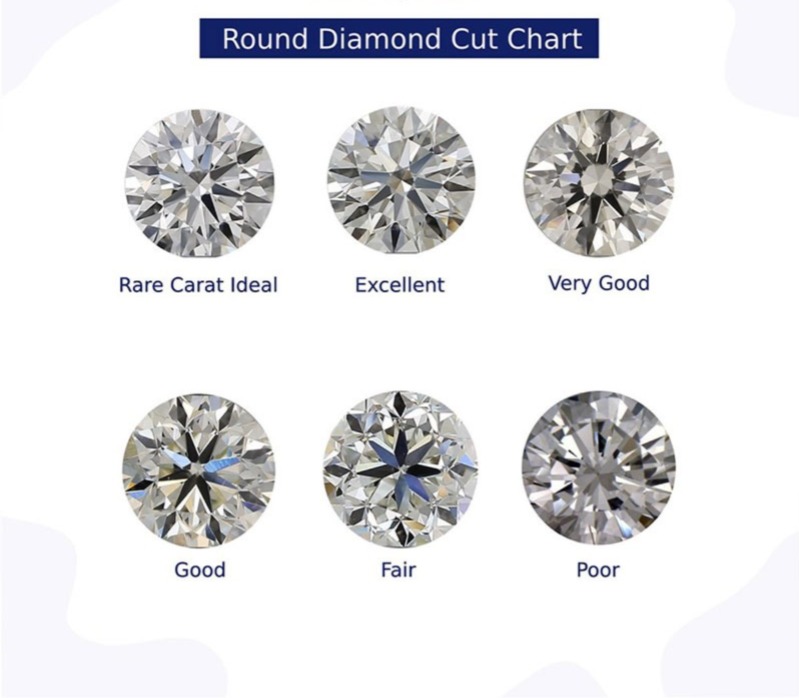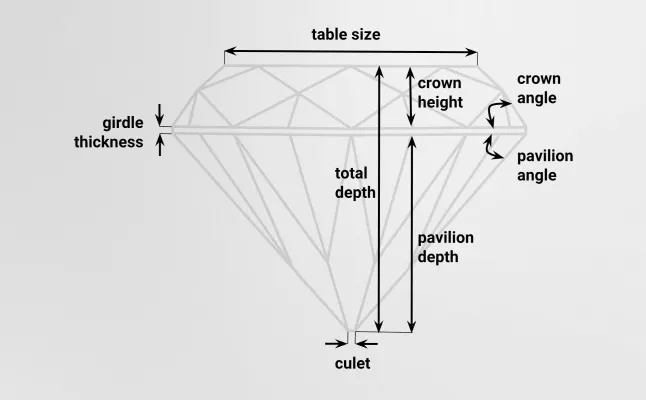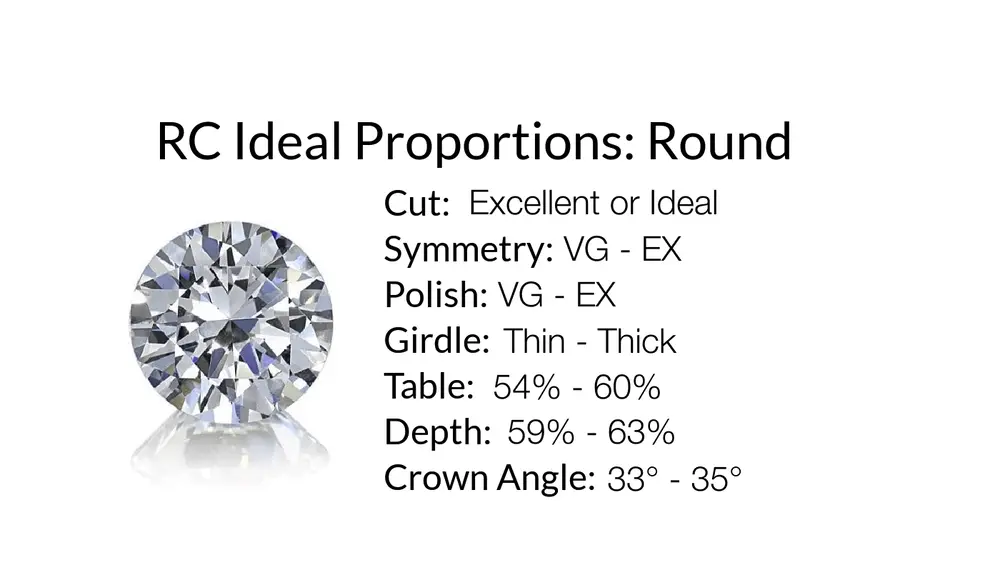Diamond Cut Guide: How to Choose a Brilliantly Sparkling Diamond
The way a diamond appears in terms of brilliance and beauty depends significantly on its cut grade during the diamond purchase. Cut relates to how diamond facets interact with light, but people commonly mistake it for diamond shape, including round and princess and pear cuts. We analyze the diamond cut grade in detail through this piece while explaining its critical value and methods for identifying the best cut for sparking light.
What Is Diamond Cut Grade?
The diamond cut grade examines diamond proportions together with symmetry and polish quality to determine how light behaves within the stone. A diamond that receives optimal cutting treatment allows internal light reflection from facet to facet before it dispenses scattered light through its top surface resulting in exceptional brilliance and fire combined with scintillation effect.

The characterization of diamond cut grade differs from the terminology of shape because it explores the masterful diamond fabrication process independent of its external design.
Why Diamond Cut Grade Matters
An improperly shaped diamond undergoes depreciation in appeal although it holds excellent clarity and color grade. Seriously precise diamond cutting algorithms maximize reflectance which enhances both brilliance and light performance thus creating an illusion of increased size.
When choosing a diamond the cut factor works as the most influential element in beauty production thus you need to focus on it first before moving onto other factors.
How Are Cut Grades Evaluated?
GIA Cut Grades (used for round brilliant natural diamonds) are as follows:
- Excellent: Maximum brilliance, crisp facets, even pattern of light and dark reflections.
- Very Good: Very bright, but some misalignment may cause slight dark areas.
- Good: Noticeable dullness and uneven light performance.
- Fair: Limited sparkle due to poor facet alignment.
- Poor: Lacks brilliance, shows prominent dark areas.

*For lab-grown diamonds, grading is typically done by IGI, which uses the same scale as GIA but adds an “Ideal” grade equivalent to GIA’s Excellent.
At Rare Carat, only diamonds rated Good or higher are listed, ensuring all selections have visual appeal and lasting value.
Key Diamond Cut Proportions (for Round Brilliants)
Understanding diamond proportions helps you choose a top-performing diamond. Here are some ideal ranges:

- Depth Percentage: 59% – 63%
Too deep or shallow leads to light leakage and less sparkle. - Table Percentage: 54% – 60%
A table too large or too small reduces light return. - Crown Angle: 32° – 36.5°
Impacts balance between brilliance and fire. - Girdle Thickness: Medium to Slightly Thick
Too thin = risk of chipping; too thick = wasted weight. - Polish & Symmetry: Very Good to Excellent
Poor symmetry or polish reduces light reflection and can reveal blemishes.

Characteristics of a Well-Cut Diamond
A well-cut diamond will display:
- Brilliance: Intense white light reflection.
- Fire: Spectral flashes of color under direct light.
- Scintillation: Sparkle and the pattern of light/dark contrast as you move the diamond.
When all proportions are in harmony, these qualities shine through, making the diamond mesmerizing in any setting.
What Is Rare Carat Ideal?
While GIA and IGI provide standard grading, Rare Carat applies an additional filter called “Rare Carat Ideal.” This is not an official cut grade, but a curated set of standards to help buyers find diamonds that meet the most favorable criteria across cut, polish, symmetry, and proportions for all shapes—not just round.
It’s our commitment to helping you find diamonds that not only sparkle, but maximize beauty and value.

Natural vs. Lab-Grown Diamonds: Any Cut Grade Differences?
Nope! Both natural and lab-grown diamonds are graded using the same criteria for cut quality. That means whether you’re shopping sustainably or traditionally, you can use the same principles to choose a brilliant diamond.
Final Buying Tips
- Always prioritize cut over the other Cs—a well-cut diamond can outperform a larger or clearer one in sparkle.
- Check the grading report—look for “Excellent” or “Ideal” from trusted labs like GIA or IGI.
- Use online tools and filters like Rare Carat Ideal to quickly narrow down diamonds with optimal cut quality.
- Don’t be afraid to ask questions about proportions and performance—your diamond is a forever investment!
Shop Smart. Shine Bright.
Whether you’re buying a timeless engagement ring or a sparkling gift, remember that the cut is key to a diamond’s brilliance. With over 50,000 couples helped, Rare Carat is here to make sure your diamond doesn’t just meet expectations—it exceeds them.
🛒 Explore Rare Carat Ideal Diamonds and find your perfect sparkle today.
